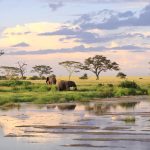Machu Picchu
Mysteries
Trekking to the Lost City of the Incas
Embark on an epic journey to Machu
Picchu, the enigmatic Lost City of the Incas. In this expert guide, we will
unveil the secrets of this ancient wonder, offering insights, trekking tips,
and the thrill of discovering one of the world’s most iconic archaeological
sites.
Table of
Contents:
- Introduction
- Machu Picchu Uncovered
- Trekking Routes to Machu Picchu
- Planning Your Machu Picchu Adventure
- Pros and Cons of Trekking to Machu Picchu
- Practical Tips and Insights
- Conclusion
- FAQs: Your Machu Picchu Queries Answered
1. Introduction
Machu Picchu, nestled in the Andes
Mountains of Peru, is a testament to the ingenuity of the Inca civilization.
This guide is your passport to unlocking the mysteries of this ancient citadel
and embarking on a life-changing trekking adventure.
2. Machu Picchu
Uncovered
Fact: Machu Picchu is believed to have been built
in the 15th century but was abandoned during the Spanish Conquest, remaining
hidden until its rediscovery in 1911.
Pros:
- Marvel at the breathtaking beauty of
Machu Picchu, with its terraces, temples, and panoramic views of the
Andes. - Explore the engineering marvels of the
site, including intricate stone constructions and the Intihuatana stone. - Gain insight into the Inca culture and
history while traversing the citadel’s terraced hillsides.
Cons:
- The site can get crowded during peak
tourist seasons, so consider visiting early in the morning for a more
serene experience. - Weather in the Andes can be
unpredictable, so be prepared for rain or cold temperatures.
3. Trekking
Routes to Machu Picchu
Fact: The Inca Trail is the most famous trekking
route to Machu Picchu, but there are alternative routes like the Salkantay,
Lares, and Choquequirao treks.
Pros:
- The Inca Trail offers a historical and
scenic route with well-preserved Inca ruins along the way. - Alternative treks provide unique
experiences, such as hot springs in the Lares Valley and the remote ruins
of Choquequirao. - Local guides enrich your journey with
cultural insights and ensure safety.
Cons:
- The Inca Trail has limited permits and
high demand, so book well in advance. - Altitude sickness can affect trekkers,
especially on routes that reach high elevations.
4. Planning Your
Machu Picchu Adventure
Fact: Machu Picchu receives over a million visitors
annually, making it one of the most popular tourist destinations in the world.
Pros:
- Advance planning allows you to secure
permits and accommodations, ensuring a seamless trekking experience. - Consider a guided tour for logistical
support, knowledgeable guides, and cultural immersion. - Nearby towns like Aguas Calientes offer
accommodations and restaurants for pre- and post-trek relaxation.
Cons:
- Machu Picchu’s popularity means that
restrictions are in place to protect the site, including designated
trekking routes and entry times. - Trekking involves physical exertion, so
it may not be suitable for everyone.
5. Pros and Cons
of Trekking to Machu Picchu
Pros:
- Trekking to Machu Picchu offers a
profound connection to nature and history. - The journey allows you to witness
stunning landscapes and diverse ecosystems. - Engaging with local communities and
experiencing their culture enhances the adventure.
Cons:
- Obtaining permits and coordinating
logistics can be challenging, particularly for the Inca Trail. - Altitude sickness and physical demands
may pose challenges for some trekkers.
6. Practical Tips
and Insights
- Permits: Secure permits well in advance,
especially for the Inca Trail, which has limited availability. - Packing: Pack layers for varying weather
conditions, including rain gear, sturdy hiking boots, and essentials like
sunscreen and insect repellent. - Acclimatization: Spend a few days in Cusco to acclimatize
to the high altitude before starting your trek.
7. Conclusion
Trekking to Machu Picchu is not just
an adventure; it’s a transformative experience that connects you with the
mysteries of the past and the beauty of the Andes. As you traverse ancient
paths and stand in awe of the citadel’s majesty, you’ll find that Machu
Picchu’s magic lingers in your heart forever.
8. FAQs: Your
Machu Picchu Queries Answered
Q1: Can I visit Machu Picchu without trekking?
A1: Yes, you can take a train or bus to Aguas
Calientes and then a shuttle bus to Machu Picchu, bypassing the trekking
routes.
Q2: What is the best time to visit Machu Picchu?
A2: The dry season from May to September is
considered the best time, but Machu Picchu is open year-round.
Q3: Are there age restrictions for trekking to
Machu Picchu?
A3: While there are no strict age limits,
trekkers should be physically fit and prepared for the challenges of
high-altitude trekking.
In conclusion, Machu Picchu is not
just a destination; it’s an odyssey through time and nature. Prepare to be awed
by its grandeur, enriched by its history, and transformed by the spirit of
adventure that permeates this remarkable journey.
:max_bytes(150000):strip_icc()/machu-PICCHU0916-2000-c0b8a30f2ce949dc90aff1ef34b7c631.jpg)

